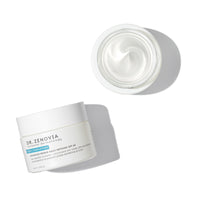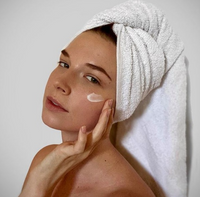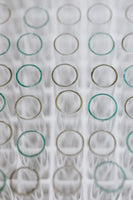How to Incorporate Glycolic Acid into Your Hormonal Acne Clearing Skincare Routine

What is Glycolic Acid?
Glycolic Acid is an Alpha Hydroxy Acid (AHA) derived from sugarcane. Applied to the skin, Glycolic Acid strips down the outermost dead layer of the epidermis (known as the stratum corneum). In this way, Glycolic Acid serves as a powerful sloughing and exfoliating agent revealing our healthy, live epidermal tissue. Proper usage should leave the skin refreshed and dewy. AHAs are great for all skin types, encourage cellular turnover, and help skin serums and creams absorb more easily into the skin.
Glycolic Acid for Acne Breakouts
When it comes to acne, Glycolic Acid helps prevent clogged pores including the formation of whiteheads and blackheads. For those prone to hormonal breakouts, incorporating an at-home chemical peel into your skincare routine will help inhibit excess sebum production, clear your pores, and brighten the skin.
Incorporating Glycolic Acid into Your Skincare Routine
A weekly skincare regimen that consists of a retinoid and a glycolic acid chemical exfoliant is the key to acne prevention and treatment. Dr. Zenovia recommends using both ingredients at night, after cleansing. The peel pads should be used before retinol. Allow the products to absorb into the skin for at least 30 seconds before moving onto the next step. If you are new to chemical exfoliants and retinol, start using them once weekly and slowly work up to 3-4 times a week. If used too frequently, chemical peels can strip the delicate skin barrier.
Dr. Zenovia’s 10% Glycolic Acne Control Peel Pads accelerate the removal of dead skin cells, unclog pores, and promote the skin’s cellular renewal process. These pads are also enhanced with Dr. Zenovia’s proprietary REG-ulate360 Complex™ to balance hormonal acne and regulate sebum production for healthy, clear skin.
Coupled with Glycolic Acid, Retinol improves overall skin texture and helps control comedonal acne- whiteheads, blackheads, and cysts. Dr. Zenovia’s Advanced Retinol Night Repair Treatment essentially delivers the prescription effect in a non-prescription product due to the way it’s been formulated using a micro polymer system stabilizer. This system encases the retinol inside like a sponge, keeping the molecule stable as it travels past the barrier, into the tissue, and finally into the cell. The micro polymer system also allows the molecule to come out of the system slowly, giving it a time-release effect. Bathing the skin in this active molecule over time makes it less irritating.
Note from Dr. Zenovia: It’s important to gradually introduce these ingredients into your skincare routine. Using Glycolic Acid and Retinol in the same routine is not recommended for sensitive skin types. If excessive dryness or irritation occurs, reduce application.
Professional Chemical Peels
While chemical exfoliants can be used at home, professional options are available at a dermatology office. With such a treatment, a chemical agent is applied to the skin, which causes controlled destruction of part of the epidermis. This leads to the exfoliation and removal of superficial skin lesions as well as the regeneration of epidermal and dermal tissue.
Deep and medium-depth peels should be avoided for patients with darker skin tones because this “trauma” can lead to more hyperpigmentation. This is called post-inflammatory hyperpigmentation and is very difficult to treat. Be very cautious about the chemical peel or laser you decide to use. Make sure your practitioner is adept in all the procedures you are paying for. Dr. Zenovia has seen many adverse effects from even the best doctors, nurses, and estheticians.









Leave a comment